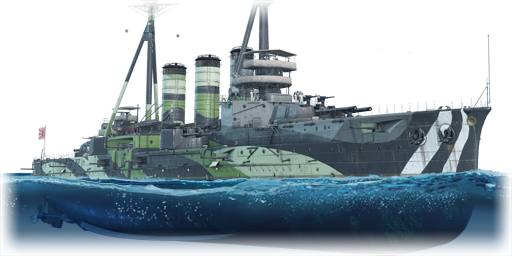The IJN Kurama (鞍馬, namesake: Mount Kurama), was the final vessel constructed within its class, which comprised two armoured cruisers. These ships were originally ordered for service during the Russo-Japanese War of 1904-1905. Designed to carry armament comparable to battleships and to operate alongside them despite a lower displacement, their construction was overshadowed by the prioritization of the Kawachi-class and the repair/reconstruction of ex-Russian vessels captured at Tsushima. It wasn't until 1911 that both ships were finally commissioned, by which time they were already outdated compared to the emerging battlecruiser class, offering superior speeds and armament. Following their belated commissioning, these cruisers found themselves participating in various ceremonial events. Kurama attended the Coronation of King George V and accompanied fleet review in 1914. Subsequently, during World War I, she served as an Allied vessel, safeguarding Allied merchant shipping in the South Pacific and supporting landings on German-occupied Caroline and Mariana Islands. In the 1920s, Kurama was assigned to the northern fleet, where she played a role in covering the landings of Japanese troops in Russia during the Siberian Intervention, providing support to White Russian forces. However, the fate of the Kurama-class was sealed by the Washington Naval Treaty, which mandated their scrapping.
It was introduced during Update "Sons of Attila" as a reward for the 2023 Tokushu Heiki event. As an Armoured Cruiser predating WWI, Kurama offers the firepower and speed akin to battleships, albeit with the armour profile of a heavy cruiser. Due to her age, she primarily contends with light and heavy cruisers from the WWI to WWII era. Equipped with an array of formidable guns, Kurama can effectively engage both destroyers and cruisers, with her main batteries possessing the capability to pose a threat even to battleships. This positions her best at the rear of the fleet, where she can provide support to other vessels and engage enemy ships from a distance. Despite her impressive offensive capabilities, Kurama is hindered by her slow speed and relatively weak armour. Additionally, a notable drawback is her lack of anti-aircraft defenses. Reflecting her 1920s configuration, which predates the recognition of the importance of aerial power, Kurama is outfitted with only 76 mm and 47 mm cannons for AA-defense, leaving her vulnerable to aerial attacks.












